Floating Water
Is it really possible to fill a glass with water and turn it upside down without spilling? this clever science trick is a popular after-dinner […]
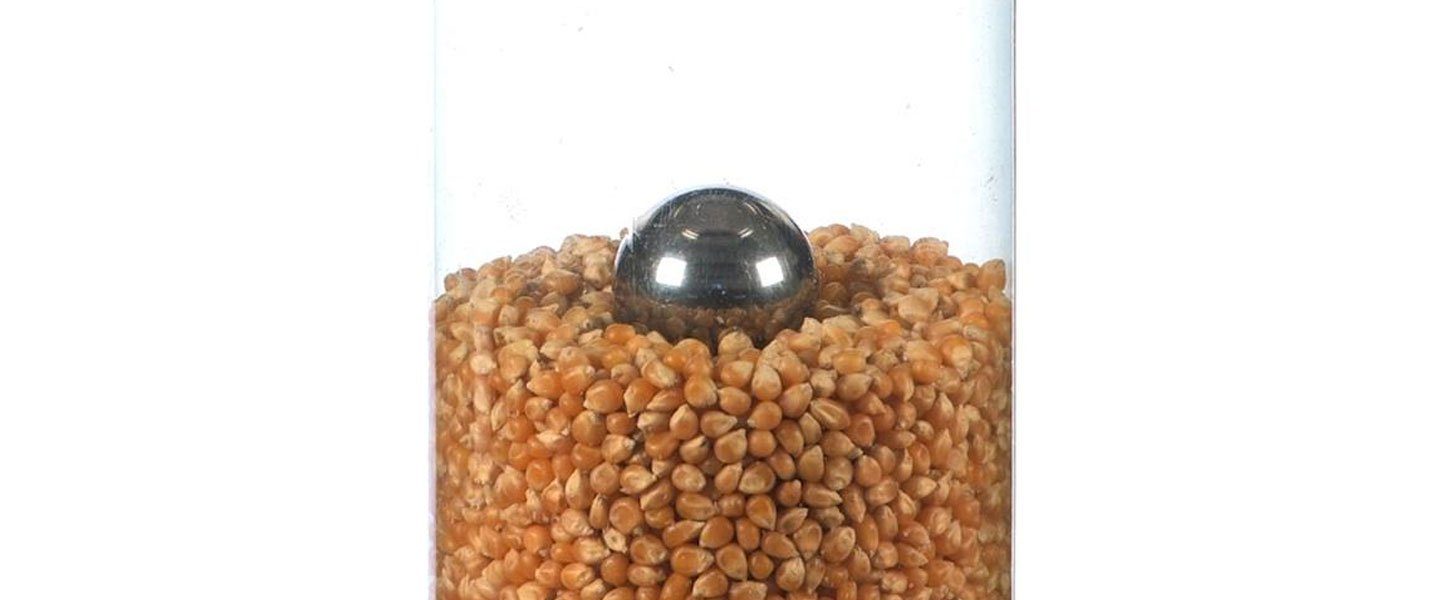
Science is not magic but magic definitely needs science. Say this to your friends, “Let’s make this metal ball bearing become a featherweight plastic sphere.” This density experiment will amaze your friends.
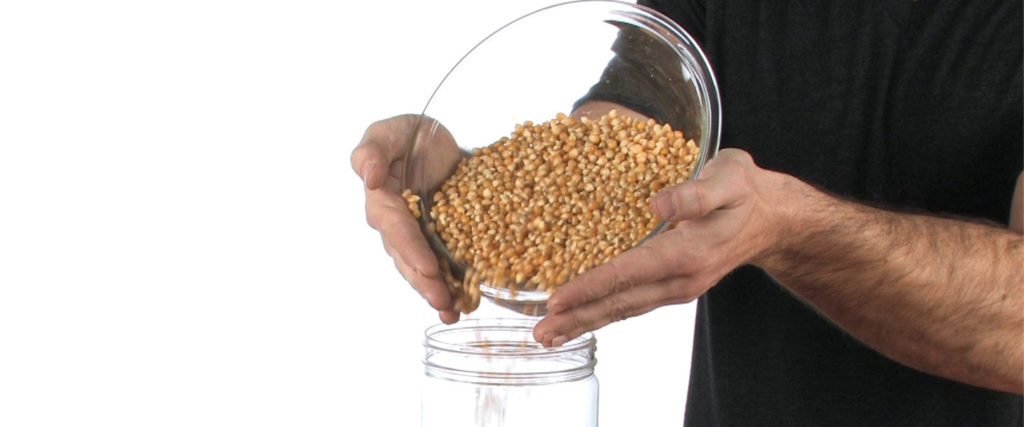
Fill a tall, clear container three quarters-full with un-popped pop corn.
[Here’s the science secret: Push the plastic sphere down into the pop corn kernels. Keep it in the center of the container. Make sure no one can see the sphere from any direction.]
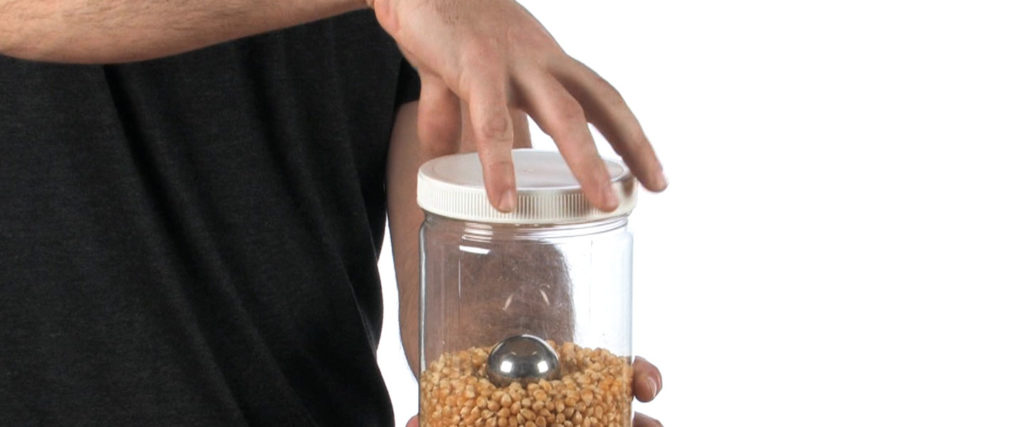
Set the ball bearing on top of the pop corn and place the lid on the container.
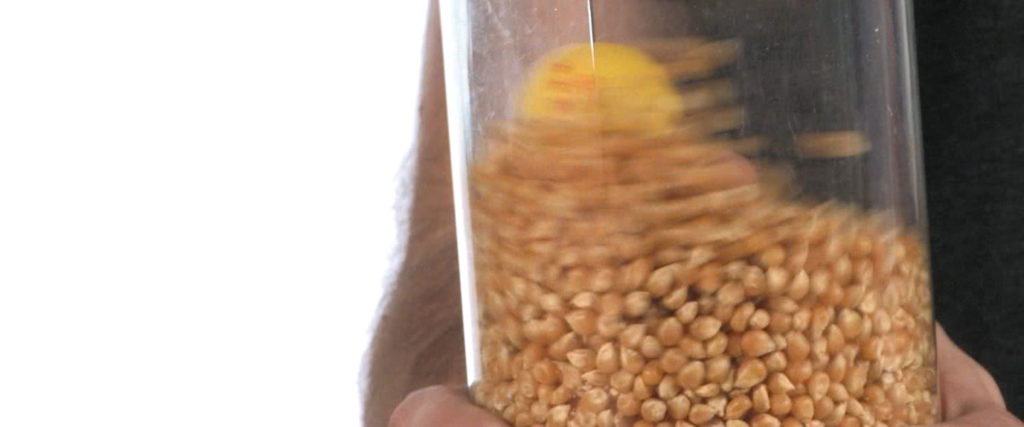
Conjure some “magic” words and make a few distractions. Pick up the container and swirl and shake it gently. The ball bearing quickly disappears and is replaced when the plastic sphere pops into view. Say what?!
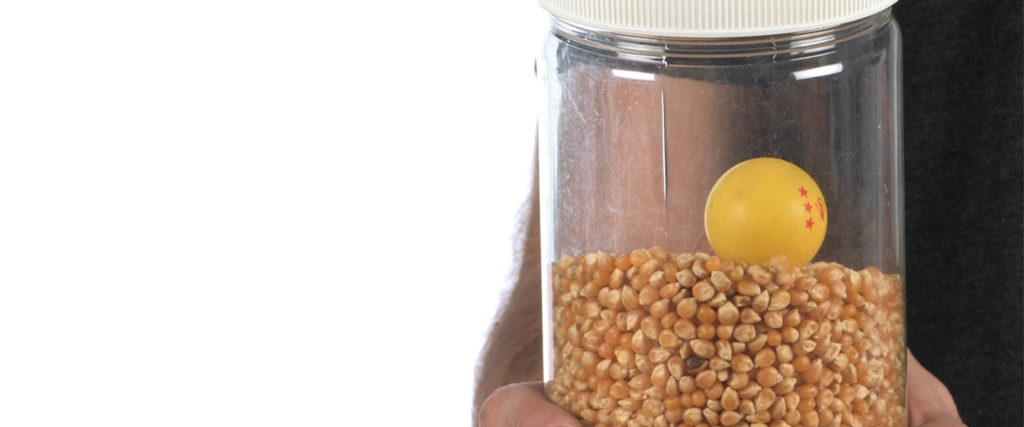
Un-popped popcorn is easy to use and probably right at hand for you. Other materials may work as well. You could test pasta, dried pinto beans, rice, millet (a cereal grain), and beads. Generally, lighter color materials make it easier to see the “magic” that’s happening.
You may have guessed that the secret is the density difference between the ball bearing and the plastic sphere. If you compare the size (the volume) of the two spheres, you’ll notice that they are likely very similar. However, if you compare the masses (the weight) of the two spheres, there’s a huge difference. The ball bearing is much heavier than the plastic sphere.
The two spheres share a comparable volume, but differ greatly in mass. This means the balls have different densities. Density is the measurement of how much “stuff” is packed into a measured space. That’s how we get the equation for density: Density = Mass (the stuff) ÷ Volume (a measured space). Nearly every substance and material imaginable has a different density. This is especially true for the two spheres you placed in the popcorn kernels. Lower density always stacks on top of higher density.
So, what does density have to do with the ball bearing sinking and the plastic sphere rising? The swirling motion of the pop corn kernels (which have a density somewhere in between the two spheres) allows the ball bearing to move downward and sink below the kernels. The same motion moves the plastic sphere upwards. Individual kernels are sliding downward, below the plastic sphere, as it rises.
A dramatic salt water density change can be experienced in real life. While humans will (sort of) float in an ocean, they really float in bodies of water like Utah’s Great Salt Lake (USA) and the Dead Sea (Israel). These bodies of water are so salty that it’s nearly impossible to sink in them! Just be sure (1) not to have any cuts or scratches on you before going in (they’ll sting in salt water), and (2) to rinse off really well with fresh water when you get out.